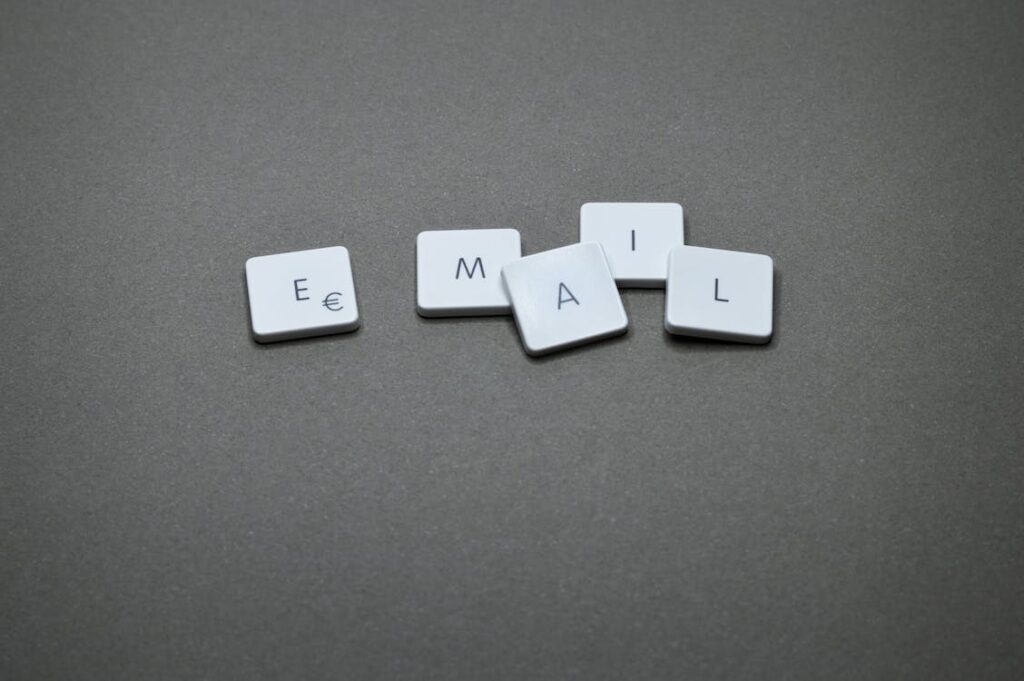In today’s digital marketing landscape, email remains a titan of communication. With countless options at your fingertips, selecting the right email marketing tool can feel like navigating a maze. In 2024, two contenders stand out: Moosend and Mailify. Each boasts unique features and capabilities, but which one truly deserves the crown as the best email marketing tool? Let’s dive into a detailed comparison, breaking down their strengths and weaknesses to guide you in making the most informed decision for your business needs.
| Moosend | Mailify |
|---|---|
 |  |
| G2 Score – 4.6 out of 5 stars | G2 Score – 4.3 out of 5 stars |
| TrustRadius Score – 9.8 out of 10 | TrustRadius Score – Nil |
User Interface and Ease of Use
A tool can have all the bells and whistles, but if it’s not user-friendly, it’s like a sports car without a steering wheel. Let’s compare Moosend and Mailify in terms of their user interfaces and ease of use.
Moosend: Simplicity Meets Efficiency
Moosend is renowned for its intuitive user interface. Navigating its platform is a breeze, even for those just dipping their toes into email marketing. The dashboard is clean, with a well-organized layout that makes finding what you need straightforward. You won’t be playing hide and seek with features here.
Creating campaigns in Moosend is delightfully simple. The drag-and-drop editor is a dream for non-techies. You can effortlessly pick elements like text boxes and images and place them where you desire. It’s like playing with digital Lego blocks – fun, easy, and creative.
But don’t let its simplicity fool you. Moosend packs a punch where it counts. The platform offers a variety of professional-looking templates, ready to be tailored to your brand. Even if design isn’t your forte, Moosend ensures your emails look top-notch.
Mailify: A Touch of Sophistication
Mailify approaches user interface with a bit more sophistication. Its dashboard presents a wealth of information at first glance. For the data-driven marketer, this is akin to a treasure map. However, for beginners, it might initially feel like decoding a cryptic puzzle.
The email creation process in Mailify, though, is where it starts to shine. The platform offers a robust drag-and-drop editor, similar to Moosend, but with an added layer of sophistication. You have a wide array of customization options at your fingertips, allowing for intricate designs and layouts. This is ideal for those who have a bit more experience in email marketing and crave more creative control.
Mailify’s template library is extensive and varied. Whether you’re crafting a newsletter, a promotional campaign, or a simple update, there’s something to suit every need. These templates are not only aesthetically pleasing but also optimized for engagement, ensuring your emails stand out in crowded inboxes.
The Verdict on UI and Ease of Use
When it comes to user interface and ease of use, Moosend and Mailify offer distinct experiences. Moosend is the go-to for straightforwardness and ease, making it a great choice for beginners or those who appreciate simplicity. Its no-frills approach puts functionality at the forefront, ensuring you can get your campaigns up and running without a steep learning curve.
Mailify, on the other hand, caters more to those who are comfortable with a bit of complexity in their tools. Its dashboard, brimming with data and options, might be overwhelming at first, but it’s a goldmine for marketers who love to delve into details and customization.
Ultimately, the choice between Moosend and Mailify in this area boils down to personal preference and experience level. Are you looking for an easy, straightforward platform that gets the job done with minimal fuss? Or do you prefer a tool that offers a deeper dive into customization and detailed analytics? Your answer will guide your decision.
Email Automation Capabilities
In the fast-paced world of digital marketing, automation is key. It’s not just about sending emails; it’s about sending the right emails, to the right people, at the right time. Let’s explore how Moosend and Mailify stack up in terms of their email automation capabilities.
Moosend: Automation for Everyone
Moosend truly excels in making email automation accessible to all. Whether you’re a small business owner with limited tech skills or a seasoned marketer, Moosend’s automation tools are designed to cater to your needs. Setting up automated email sequences is straightforward, thanks to its user-friendly interface and a variety of pre-built automation templates.
The platform allows you to create custom workflows based on subscriber behavior, such as opening an email or clicking a link. This means you can tailor your messages to resonate with your audience, increasing engagement and conversions. Moreover, Moosend’s segmentation tools enable you to send highly targeted emails, ensuring relevance and personalization.
Mailify: Sophisticated Automation for the Data-Driven
Mailify approaches automation with a focus on sophistication and data-driven strategies. Its platform offers a range of advanced automation features that allow for intricate and highly targeted email sequences. This is particularly appealing to marketers who are looking to delve deep into customer behavior and tailor their campaigns with precision.
Mailify’s strength lies in its ability to handle complex automation workflows with ease. You can segment your audience based on a wide range of criteria and set up triggers that respond to very specific actions. This level of detail in automation ensures that each subscriber receives content that is not just relevant, but also timely and engaging.
Comparing Automation Capabilities
When it comes to email automation, both Moosend and Mailify offer robust solutions, but their approaches cater to different needs.
Moosend is ideal for users who want a balance between simplicity and effectiveness. Its automation tools are easy to use yet powerful enough to create personalized and engaging email campaigns. This makes it a great choice for small to medium-sized businesses looking for an efficient way to enhance their email marketing without getting bogged down in complexity.
Mailify, however, is more suited for users who crave depth and detail in their automation strategies. Its advanced features cater to the needs of data-driven marketers who want to leverage intricate customer insights for highly personalized email journeys. Larger businesses or those with a dedicated marketing team may find Mailify’s sophisticated automation capabilities more aligned with their complex needs.
Your choice between Moosend and Mailify for email automation should be guided by your business’s size, the complexity of your marketing strategies, and your comfort level with automation tools.
Pricing Plans: Weighing Cost Against Features
In the world of business, every penny counts. Finding an email marketing tool that offers the right balance of features and affordability is crucial. Let’s break down the pricing structures of Moosend and Mailify to see which one offers more bang for your buck.
| Moosend | Free Plan: Offers access to basic features for up to 1,000 subscribers, including email campaigns, automation, and landing pages. Pro Plan: Pricing starts at $8 per month for up to 2,000 subscribers, with unlimited emails. Includes advanced features like transactional emails, landing page builder, and phone support. The price scales with the number of subscribers. Enterprise Plan: Custom pricing for businesses needing custom features like account management, SSO (Single Sign-On), and more. |
| Mailify | Mailify offers a unique credit-based system, where users buy email credits that can be used to send emails. Essential Plan: Includes basic features like email campaigns and forms. Pricing starts at around $69 for 5,000 credits. Premium Plan: Adds advanced features such as SMS marketing, automation, and landing pages. Pricing starts at around $129 for 5,000 credits. Exclusive Plan: Offers bespoke services and support, with pricing available upon request. Note: The number of emails you can send per credit varies based on the plan and additional features. |
Moosend: Affordable Scalability
Moosend is known for its budget-friendly pricing plans, which are especially attractive to small and medium-sized businesses. The platform offers a free plan with basic features, which is great for those just starting out or with minimal needs. As your business and subscriber list grow, you can seamlessly move to their paid plans, which are priced based on the number of subscribers.
One of the appealing aspects of Moosend’s pricing is its scalability. As your needs increase, the plans grow with you, but at a pace and price that won’t break the bank. This makes Moosend an excellent option for businesses that are scaling up and need a tool that grows with them without sudden, steep cost increases.
Mailify: Value for the Feature-Heavy User
Mailify takes a different approach to pricing. Its plans are structured to cater to businesses that need more advanced features and capabilities. While this might mean a higher starting price compared to Moosend, the value is evident in the comprehensive feature set that comes with even the most basic plan.
Mailify’s pricing is ideal for businesses that are already established in their email marketing efforts and need a tool that can support more complex strategies. Its plans are designed to offer a wide range of advanced features, including detailed analytics, sophisticated automation, and extensive integration options.
Pricing Plan Comparison
The decision between Moosend and Mailify in terms of pricing largely depends on where you are in your business journey and what you need from your email marketing tool. Moosend is a great choice if you’re looking for a cost-effective solution that offers essential email marketing features with the flexibility to scale. Its straightforward pricing structure makes it easy for businesses to predict costs as they grow , ensuring that you can budget effectively without any surprises.
On the other hand, Mailify may be more suitable if your business is at a stage where you can invest more in your marketing tools and need a range of advanced features. The higher cost is justified by the extensive capabilities and sophisticated features that Mailify offers, making it a solid choice for businesses with more complex email marketing needs.
Ultimately, when it comes to pricing, it’s not just about the cheapest option but finding the tool that provides the most value for your specific needs. If you’re starting out or have straightforward email marketing requirements, Moosend’s affordability and scalability will likely serve you well. However, if you’re ready to dive into more advanced email marketing tactics and need a tool that can keep up, Mailify’s feature-rich plans could be the better investment.

Related: Check out our free SEO suite

Customer Support: The Backbone of User Experience
Effective customer support can make or break your experience with an email marketing tool. It’s not just about solving problems; it’s about the overall support ecosystem that helps you make the most of the platform. Let’s evaluate how Moosend and Mailify perform in this crucial area.
Moosend: Responsive and Resourceful
Moosend is known for its responsive and helpful customer support. The platform offers multiple channels for support, including email, live chat, and a comprehensive knowledge base. What stands out is the speed and quality of their responses. Whether you’re a novice needing guidance or an experienced marketer with a technical query, Moosend’s support team is quick to assist.
Another commendable aspect of Moosend’s customer service is their extensive knowledge base. It’s packed with useful articles, step-by-step guides, and video tutorials, making it a valuable resource for self-help. This is particularly beneficial for users who prefer to troubleshoot issues on their own.
Mailify: Dedicated and Detailed Support
Mailify places a strong emphasis on detailed and personalized customer support. Their team is known for providing in-depth assistance, not just with technical issues but also with strategic advice on email marketing. This level of support is especially valuable for businesses that are looking to refine their email marketing strategies.
In addition to traditional support channels like email and phone, Mailify offers training sessions and webinars. These resources are designed to help users fully understand and utilize all the features of the platform, ensuring that customers get the most out of their investment.
Customer Support Comparison
Both Moosend and Mailify excel in providing high-quality customer support, but their approaches cater to different user preferences. Moosend is ideal if you’re looking for quick, responsive support with a vast array of self-help resources. Its user-friendly support system is particularly appealing to those who need timely assistance without much complexity.
Mailify, on the other hand, is better suited if you prefer more personalized, in-depth support. The additional training sessions and webinars are a boon for businesses that want to deepen their understanding of email marketing and leverage Mailify’s features to their fullest potential. In the realm of customer support, your choice between Moosend and Mailify should align with the level and style of support you expect. Whether you prefer quick solutions or in-depth guidance, both platforms are equipped to enhance your user experience and ensure you can effectively manage your email marketing campaigns.
Integration Capabilities: Enhancing Your Marketing Stack
In today’s digital world, the ability of an email marketing tool to seamlessly integrate with other software is crucial. It can significantly amplify your marketing efforts and streamline your processes. Let’s examine how Moosend and Mailify stack up in terms of integration capabilities.
Moosend: A Hub of Integrations
Moosend shines in the integration arena. It offers a wide range of integrations with popular CRMs, e-commerce platforms, and other essential marketing tools. This extensive integration ecosystem allows you to connect Moosend with tools you already use, making your marketing efforts more efficient and cohesive.
Key integrations include connections with platforms like Salesforce, Magento, WooCommerce, and Zapier, which opens up a world of automation possibilities. The ease of integration with these tools means you can synchronize data, automate workflows, and create a more unified marketing strategy without the hassle of manual data transfer.
Moreover, Moosend’s API is robust and well-documented, catering to those who need custom integrations. This feature is particularly beneficial for businesses with specific needs that require a more tailored approach.
Mailify: Focused and Functional Integrations
Mailify may not have as extensive a list of integrations as Moosend, but it covers all the essentials with a focus on functionality. The platform integrates seamlessly with popular services like WordPress, Google Analytics, and various e-commerce platforms. These integrations are designed to enhance the core functionalities of your email marketing campaigns.
What stands out with Mailify is the quality of these integrations. They are not just add-ons; they are deeply integrated into the platform, providing a seamless experience. For instance, integrating Mailify with your e-commerce platform can help in creating targeted campaigns based on customer purchase behavior, enhancing the effectiveness of your marketing efforts.
Integration Capabilities Comparison
The choice between Moosend and Mailify in terms of integration capabilities depends largely on the breadth and depth of integrations you need. Moosend is the better option if you are looking for a wide range of integrations that cover various aspects of your marketing stack. Its extensive integration list and the flexibility of custom API integrations make it a versatile choice for businesses with diverse tools and platforms.
Mailify, however, is more suited for businesses that require deep, functional integrations with core platforms. If your focus is on having seamless integrations that enhance specific aspects of your email marketing, rather than a vast array of options, Mailify would be the more appropriate choice.
Ultimately, both platforms provide robust integration capabilities, but your decision should be based on the specific needs of your business. If you require a tool that can easily connect with a wide variety of other systems and services, Moosend’s broad integration spectrum is ideal. On the other hand, if you need a tool that offers deeper, more seamless integration with a few key platforms, Mailify’s focused approach will serve you better.
In conclusion, the integration capabilities of an email marketing tool play a significant role in how well it can complement and enhance your overall marketing strategy. Both Moosend and Mailify offer strong integration options, but the best choice depends on the complexity and scope of your existing marketing tech stack and how you wish to synchronize it with your email marketing efforts.
A/B Testing: Perfecting Your Email Campaigns
A/B testing is a crucial feature for email marketers, allowing you to compare different versions of your emails to see which performs better. This data-driven approach can significantly improve your open rates, click-through rates, and overall engagement. Let’s see how Moosend and Mailify approach A/B testing.
Moosend: Intuitive and Comprehensive A/B Testing
Moosend offers a robust A/B testing tool that’s both intuitive and comprehensive. You can test various elements of your emails, including subject lines, sender names, content, and even different design layouts. This level of flexibility is great for marketers who want to refine every aspect of their emails to achieve the best possible performance.
Setting up A/B tests in Moosend is straightforward. You select the elements you want to test, define your test groups, and Moosend takes care of the rest. Once your test is running, the platform provides detailed analytics, allowing you to see which version is performing better and why. This insight is invaluable for continuously improving your email campaigns.
Mailify: Advanced A/B Testing for Detailed Insights
Mailify also offers powerful A/B testing capabilities, with a focus on providing detailed insights into campaign performance. Like Moosend, you can test various elements of your emails. However, Mailify goes a step further by offering more granular control over the testing process and more detailed analytics.
With Mailify, you can set up more complex testing scenarios, which is ideal for marketers who are looking to get very specific insights from their tests. The platform’s analytics are comprehensive, giving you a clear understanding of the nuances of how different elements affect engagement and conversion rates.
A/B Testing Comparison
Both Moosend and Mailify offer excellent A/B testing features, but they cater to different levels of complexity and detail. Moosend is a great choice if you want an A/B testing tool that is easy to use but still gives you enough flexibility to test a wide range of elements. It’s perfect for businesses that are starting to experiment with A/B testing and want a straightforward, no-fuss approach.
Mailify, on the other hand, is ideal for more advanced users who want deeper insights from their A/B tests. Its advanced testing capabilities and detailed analytics make it a powerful tool for marketers who are serious about optimizing every aspect of their email campaigns. In the end, the choice between Moosend and Mailify for A/B testing should depend on your level of expertise and the depth of insights you want from your testing. Both platforms offer the tools to significantly improve your email marketing effectiveness through data-driven decisions.
Conclusion
In the quest to find the best email marketing tool for 2024, Moosend and Mailify both emerge as strong contenders, each with its unique strengths. Moosend stands out for its user-friendly interface, making it an excellent choice for beginners and those who value simplicity in their tools. Its robust automation features, affordable pricing plans, and comprehensive A/B testing capabilities cater to a wide range of marketing needs. Additionally, Moosend’s extensive integration capabilities make it a versatile choice for businesses using various tools and platforms.
Mailify, on the other hand, appeals to those who seek more advanced features in their email marketing tool. With its sophisticated user interface, detailed analytics, and advanced A/B testing options, it is suited for experienced marketers who desire depth and granularity in their campaigns. Although its pricing is on the higher side, the value it offers in terms of features and capabilities makes it a worthy investment for businesses ready to take their email marketing to the next level.
Ultimately, your choice between Moosend and Mailify should align with your specific business needs, level of expertise in email marketing, and the features you prioritize. Whether you choose the streamlined, user-friendly approach of Moosend or the feature-rich, advanced capabilities of Mailify, both platforms are equipped to enhance your email marketing efforts and help you achieve your business goals. In 2024, the landscape of email marketing continues to evolve, and having the right tool in your arsenal can make a significant difference in how you connect with your audience and drive your marketing success.
Read next:
- Get Your Mortgage Business to the Top of Google: A Step-by-Step SEO Guide
- The Ultimate Guide to Capturing Credit Card Shoppers Through SEO
- Unlock the Secrets to Sky-High Rankings for Your Banking Website
- How Financial Institutions Can Skyrocket Their Online Presence with SEO
- How to Utilize Facebook Lead Generation Ads: A Deep Dive





















